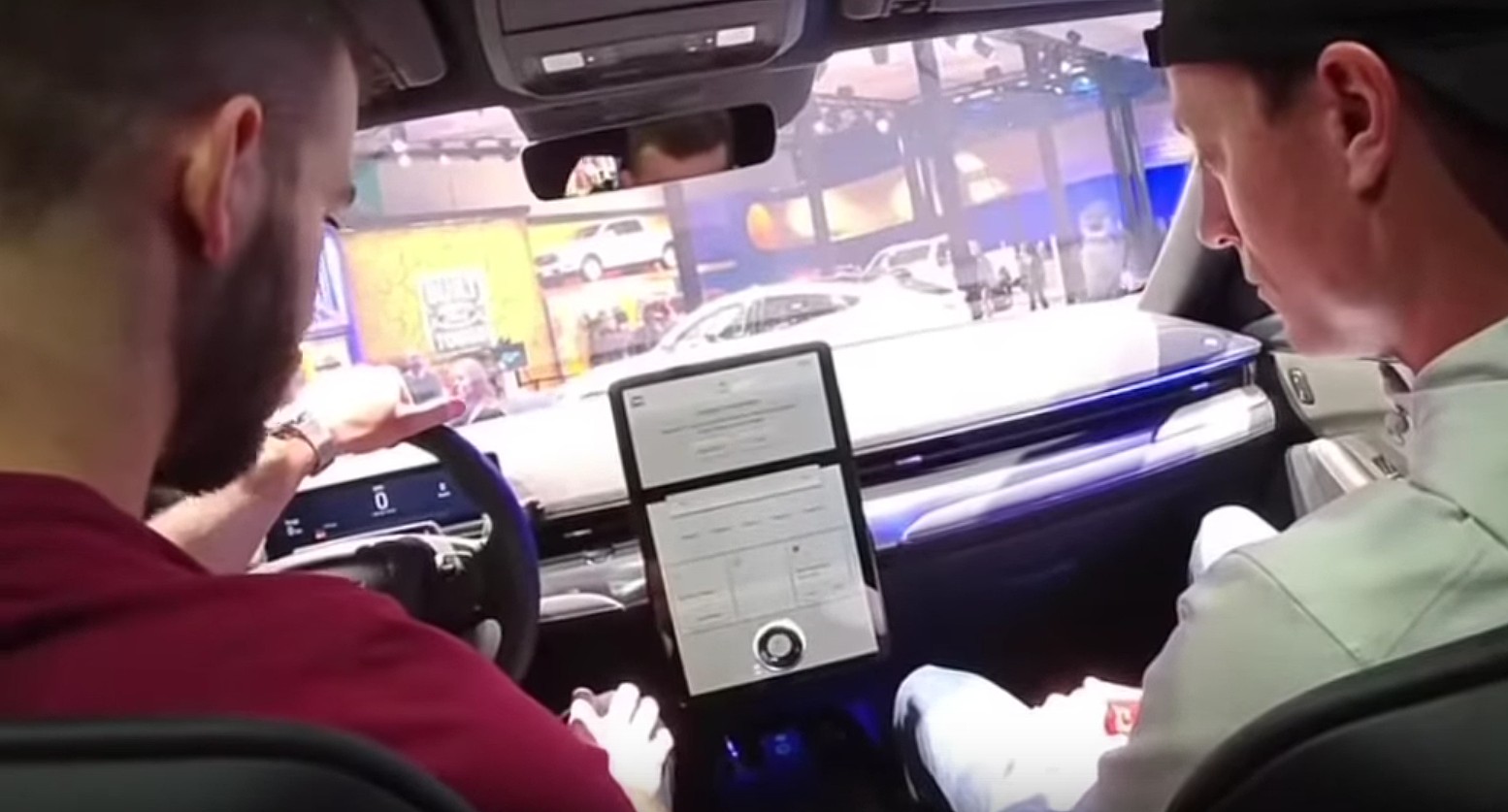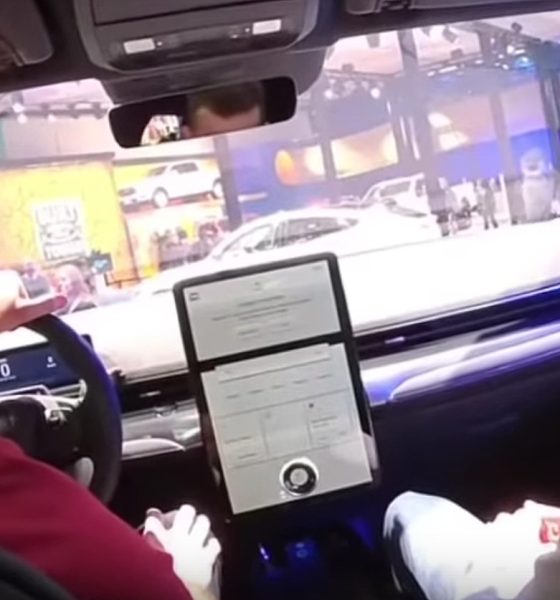

News
Ford Mach-E touchscreen demo only highlights Tesla’s stark lead in user experience
Tesla holds a lead in several aspects of the electric car market, from its battery management and efficiency to its over-the-air software updates. Part of this is due to its vertical integration, which allows the company to develop software that is specifically designed to work well with its vehicles’ hardware. This makes Tesla’s electric cars pretty much the vehicle equivalent of the iPhone and iOS in terms of its smoothness and ease of use.
This is not to say that Tesla’s software is perfect, of course. The company’s vehicles still encounter bugs at times, and it is evident that there is still a lot of room for improvement. That being said, if a recent video of the Ford Mustang Mach-E’s in-car software and UI is any indication, it appears that even in its ever-improving state, Tesla’s in-car software is leagues beyond the competition.
During the LA Auto Show, Tesla enthusiasts Rob of the Tesla Daily podcast, Galileo of YouTube’s Hyperchange channel, and TSLA investor Matt Joyce opted to take a look at the recently-unveiled Ford Mustang Mach-E, a premium all-electric crossover that is expected to compete with the upcoming Tesla Model Y. Strangely enough, to gain access to the vehicle’s interior, the Tesla Daily podcast host and the rest of the group had to pay a refundable reservation fee of $500.
Once inside, a Ford representative gave a brief walkthrough of the Mach-E’s features, particularly its portrait-oriented center display. Footage taken of the demo from the Hyperchange host revealed that the software in the Mach-E’s infotainment system is notably slow and laggy when responding to touch inputs. When asked about why this was the case, the Ford representative stated that it was likely due to the display being on for several days.
Granted, the Ford Mustang Mach-E in the LA auto show was a demo unit, and as such, its software is likely still in its developmental phase. Thus, Ford has a good amount of time to refine its all-electric crossover’s software before it gets released to the market.
Unfortunately, veteran automakers have a reputation for releasing in-car software that is about as quick and responsive as the first touchscreen phones that attempted to rival the first iPhones more than a decade ago. The Jaguar I-PACE, for example, is a vehicle that has received over 60 awards from esteemed organizations and media agencies, but the vehicle’s infotainment system cannot hold a candle to the Model 3’s software and user interface.
The same is true for the Audi e-tron. The vehicle is posh and luxurious, but when it comes to software, the car just does not feel like it is equipped with the best that tech has to offer. This is something that was explained by Elon Musk on Twitter, when he addressed why the auto industry is simply not very good at in-car tech. “Connected, autonomous cars require great software. Advanced factories also require great software. The car industry is not very good at software,” Musk wrote.
Considering that the Mustang Mach-E is expected to be released next year, Ford would have to work really hard to make sure that its all-electric crossover gives users an experience that is more Tesla than Jaguar. The all-electric crossover market expects as much.
Watch a first look at the Ford Mustang Mach-E’s infotainment system in the video below.

Elon Musk
Elon Musk and Tesla AI Director share insights after empty driver seat Robotaxi rides
The executives’ unoccupied tests hint at the rapid progress of Tesla’s unsupervised Robotaxi efforts.

Tesla CEO Elon Musk and AI Director Ashok Elluswamy celebrated Christmas Eve by sharing personal experiences with Robotaxi vehicles that had no safety monitor or occupant in the driver’s seat. Musk described the system’s “perfect driving” around Austin, while Elluswamy posted video from the back seat, calling it “an amazing experience.”
The executives’ unoccupied tests hint at the rapid progress of Tesla’s unsupervised Robotaxi efforts.
Elon and Ashok’s firsthand Robotaxi insights
Prior to Musk and the Tesla AI Director’s posts, sightings of unmanned Teslas navigating public roads were widely shared on social media. One such vehicle was spotted in Austin, Texas, which Elon Musk acknowleged by stating that “Testing is underway with no occupants in the car.”
Based on his Christmas Eve post, Musk seemed to have tested an unmanned Tesla himself. “A Tesla with no safety monitor in the car and me sitting in the passenger seat took me all around Austin on Sunday with perfect driving,” Musk wrote in his post.
Elluswamy responded with a 2-minute video showing himself in the rear of an unmanned Tesla. The video featured the vehicle’s empty front seats, as well as its smooth handling through real-world traffic. He captioned his video with the words, “It’s an amazing experience!”
Towards Unsupervised operations
During an xAI Hackathon earlier this month, Elon Musk mentioned that Tesla owed be removing Safety Monitors from its Robotaxis in Austin in just three weeks. “Unsupervised is pretty much solved at this point. So there will be Tesla Robotaxis operating in Austin with no one in them. Not even anyone in the passenger seat in about three weeks,” he said. Musk echoed similar estimates at the 2025 Annual Shareholder Meeting and the Q3 2025 earnings call.
Considering the insights that were posted Musk and Elluswamy, it does appear that Tesla is working hard towards operating its Robotaxis with no safety monitors. This is quite impressive considering that the service was launched just earlier this year.
Elon Musk
Starlink passes 9 million active customers just weeks after hitting 8 million
The milestone highlights the accelerating growth of Starlink, which has now been adding over 20,000 new users per day.

SpaceX’s Starlink satellite internet service has continued its rapid global expansion, surpassing 9 million active customers just weeks after crossing the 8 million mark.
The milestone highlights the accelerating growth of Starlink, which has now been adding over 20,000 new users per day.
9 million customers
In a post on X, SpaceX stated that Starlink now serves over 9 million active users across 155 countries, territories, and markets. The company reached 8 million customers in early November, meaning it added roughly 1 million subscribers in under seven weeks, or about 21,275 new users on average per day.
“Starlink is connecting more than 9M active customers with high-speed internet across 155 countries, territories, and many other markets,” Starlink wrote in a post on its official X account. SpaceX President Gwynne Shotwell also celebrated the milestone on X. “A huge thank you to all of our customers and congrats to the Starlink team for such an incredible product,” she wrote.
That growth rate reflects both rising demand for broadband in underserved regions and Starlink’s expanding satellite constellation, which now includes more than 9,000 low-Earth-orbit satellites designed to deliver high-speed, low-latency internet worldwide.
Starlink’s momentum
Starlink’s momentum has been building up. SpaceX reported 4.6 million Starlink customers in December 2024, followed by 7 million by August 2025, and 8 million customers in November. Independent data also suggests Starlink usage is rising sharply, with Cloudflare reporting that global web traffic from Starlink users more than doubled in 2025, as noted in an Insider report.
Starlink’s momentum is increasingly tied to SpaceX’s broader financial outlook. Elon Musk has said the satellite network is “by far” the company’s largest revenue driver, and reports suggest SpaceX may be positioning itself for an initial public offering as soon as next year, with valuations estimated as high as $1.5 trillion. Musk has also suggested in the past that Starlink could have its own IPO in the future.
News
NVIDIA Director of Robotics: Tesla FSD v14 is the first AI to pass the “Physical Turing Test”
After testing FSD v14, Fan stated that his experience with FSD felt magical at first, but it soon started to feel like a routine.

NVIDIA Director of Robotics Jim Fan has praised Tesla’s Full Self-Driving (Supervised) v14 as the first AI to pass what he described as a “Physical Turing Test.”
After testing FSD v14, Fan stated that his experience with FSD felt magical at first, but it soon started to feel like a routine. And just like smartphones today, removing it now would “actively hurt.”
Jim Fan’s hands-on FSD v14 impressions
Fan, a leading researcher in embodied AI who is currently solving Physical AI at NVIDIA and spearheading the company’s Project GR00T initiative, noted that he actually was late to the Tesla game. He was, however, one of the first to try out FSD v14.
“I was very late to own a Tesla but among the earliest to try out FSD v14. It’s perhaps the first time I experience an AI that passes the Physical Turing Test: after a long day at work, you press a button, lay back, and couldn’t tell if a neural net or a human drove you home,” Fan wrote in a post on X.
Fan added: “Despite knowing exactly how robot learning works, I still find it magical watching the steering wheel turn by itself. First it feels surreal, next it becomes routine. Then, like the smartphone, taking it away actively hurts. This is how humanity gets rewired and glued to god-like technologies.”
The Physical Turing Test
The original Turing Test was conceived by Alan Turing in 1950, and it was aimed at determining if a machine could exhibit behavior that is equivalent to or indistinguishable from a human. By focusing on text-based conversations, the original Turing Test set a high bar for natural language processing and machine learning.
This test has been passed by today’s large language models. However, the capability to converse in a humanlike manner is a completely different challenge from performing real-world problem-solving or physical interactions. Thus, Fan introduced the Physical Turing Test, which challenges AI systems to demonstrate intelligence through physical actions.
Based on Fan’s comments, Tesla has demonstrated these intelligent physical actions with FSD v14. Elon Musk agreed with the NVIDIA executive, stating in a post on X that with FSD v14, “you can sense the sentience maturing.” Musk also praised Tesla AI, calling it the best “real-world AI” today.








